No question about it, it had to be today.
It’s been windy and in the teens for two weeks, we’re expecting snow tonight and tomorrow, and then even more frigid temperatures to follow.
This afternoon, however, was a balmy 33 degrees with gentle breezes that kept the “feels like” temp in the upper 20s. For a gal still learning to be “weatherproof” today was the day to get out for a hike.
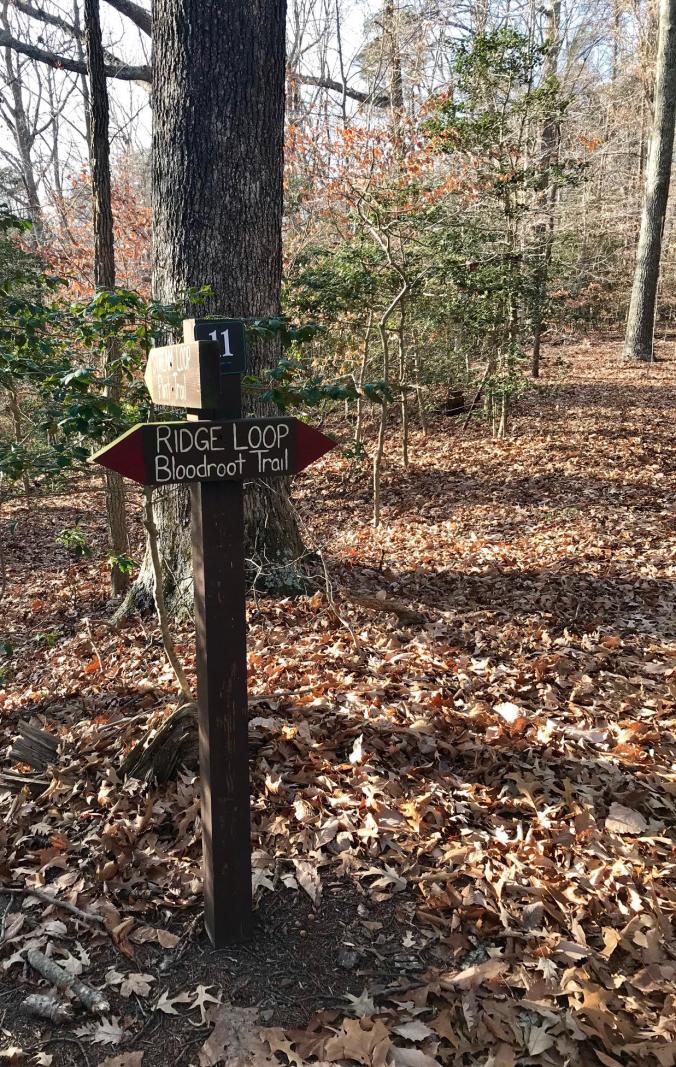
The trailhead sign for the Bloodroot Trail, which winds around the ridge inside and above the Stream Loop I hiked a few weeks ago.
Or, rather, a walk in the woods. Hiking, to me, carries a connotation of physical exercise. This makes me feel obligated to move quickly along the trails, keeping up my pace and heart rate. Walking quickly on the trails is also a great way to miss everything going on in the woods that I came out to see in the first place. So, my “resolution” for this year is to quit hiking and just walk (slowly, pausing often) in the woods.
(Exercise will have to be accomplished at home on my NordicTrac elliptical machine. I call it “Hellga” for obvious reasons.)
So today, despite a hip-deep mound of unfolded laundry and before the urgent grocery run, I hit the Bloodroot Trail in the American Chestnut Land Trust’s (ACLT) Parker’s Creek Preserve.
It was a good choice. Nature never disappoints.
I started the trail walking way too fast. Three weeks of holiday preparation and family visits, the last two of which I was basically stuck indoors, had me in my head. And my head up my backside. (I could tell because my thoughts were all crappy.)
All I heard was the crunch of leaves and the rustling of my many layers against the extra blubber I’d built up over the holidays (warm, but bad for my self-esteem) as I barged down the trail.
Luckily, I ran into another woods-walker, an ACLT volunteer who was out to bow hunt the evening hours in order to check the local white-tailed deer population. He didn’t know me. He didn’t care about my holidays. He was just glad to be in the woods, and glad for me that I was there, too. We chatted for a minute about the beautiful lacy leaves still decorating the beech trees, about how Parker’s Creek had frozen solid and so the raft crossing is closed, about how some unwise soul would probably try to cross it on foot anyway and be sorry for it.
I thanked him for his good trailwork – the ACLT trails impress me more on every visit – and wished him luck in his hunting, eager to move on now that our chat had stopped my inner monologue and successfully removed my head from my rump. (I kept that last part to myself.)
That’s maybe the best part of the woods; once you wake up and tune in, the sights and sounds overtake the tempest-in-a-teapot of human thought and push it aside. The questions the woods ask are so much more interesting that anything I already know.
Still, as long as I was moving, the forest remained silent. Strange. Or not. If I were a critter in the winter woods and a nosy human was clomping through, I’d save my warm breath and enjoy my hiding space until the clumsy clomper had passed.
It is counter-intuitive to pause in the wilderness when the weather is cold. There’s some mammalian drive that wants your feet to keep moving until you reach warm cabin or safe car. Today I fought that urge, and nature rewarded me.
Just as I rounded a corner, I saw on the bridge over the valley stream a cat-sized bit of furry, rusty-red motion. As the creature in question trotted away I caught sight of four black paws and snow-white tipped tail. A red fox (Vulpes vulpes)! My first trail-sighting!
I’ve seen many furry friends from the driver’s seat of car as they dashed away from the road (and a few that didn’t make it across), plenty of orange-red eyes glowing in the night at the edge of the field, but I’d never seen one on a trail until today. Though the normally nocturnal fox was likely out hunting early to avoid the coldest hours of night, its appearance was full-on magical to me. Worth the whole trip. But the walk wasn’t even half over yet, and the pictures below reveal some of the questions and answers the woods gave me.

I paused to admire and photograph the two trees at center before I came upon the fox. It was probably the fact that I had quit making so much noise that encouraged the fox to stay long enough for me to catch a glimpse when I rounded the corner.
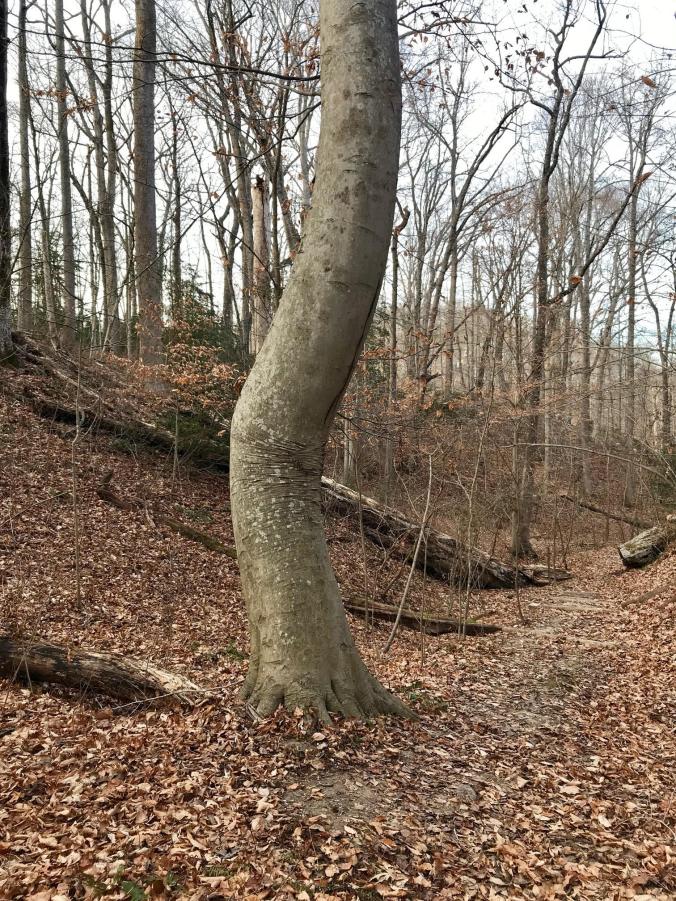
I really am developing a thing for beech trees. Look at this giant! Too wide to wrap my arms around, but still showing off that “muscles under skin” appearance. To me, this looks like the inside of a bent elbow. I wonder what caused the bend.
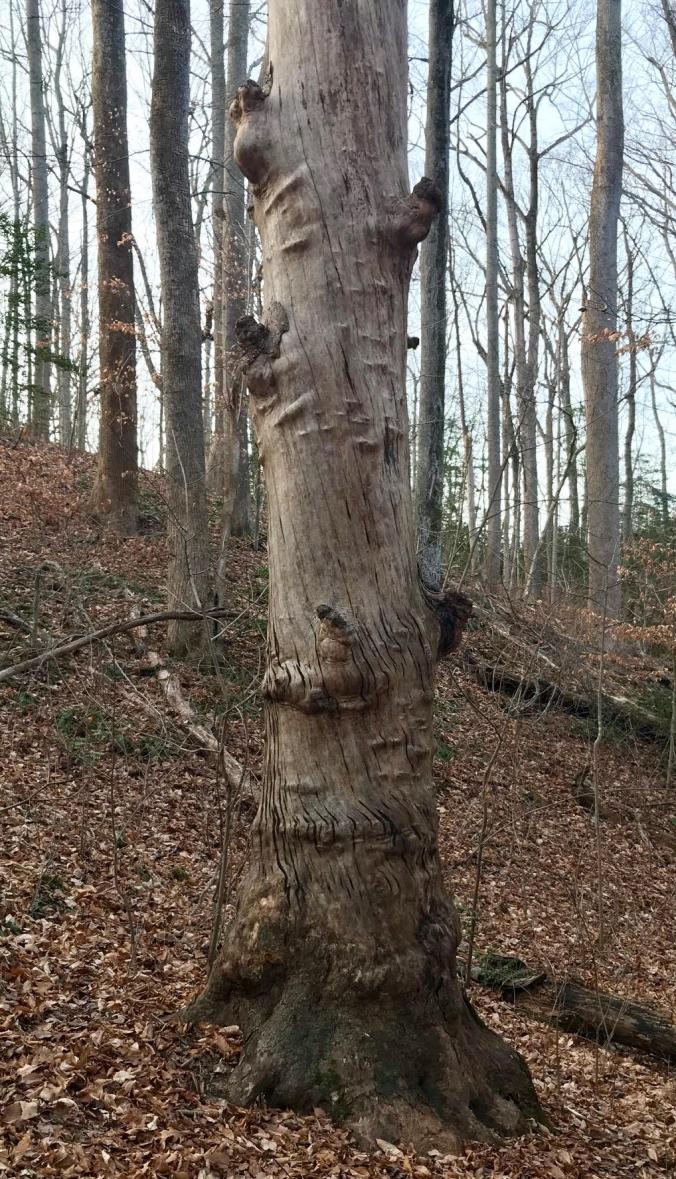
This is the standing snag of a dead giant. Though I didn’t examine the bark at the base closely enough to know what kind of tree this was, I love how easy it is to see the tree’s natural twisting-as-it-grows pattern. Why do trees twist as they grow?

The fox’s view. A frozen streamlet taken with a hand still slightly shaky from the excitement of seeing a fox. If the streams are frozen, where will the fox find water to drink?
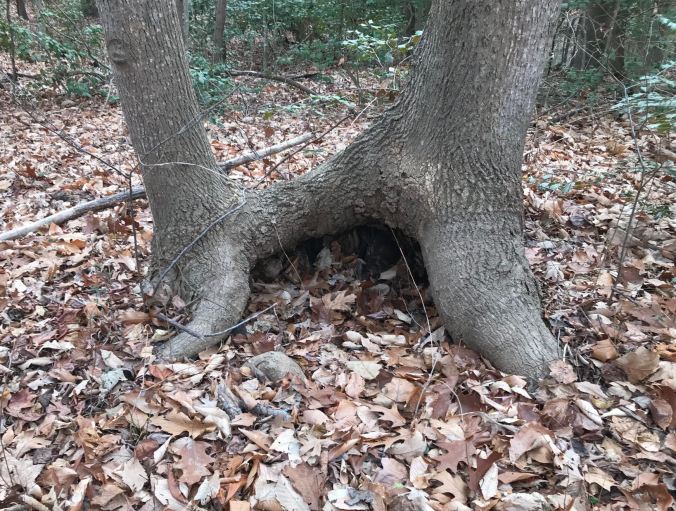
Who will this shelter tonight? How do the feathered ones and furry ones survive these arctic blasts?
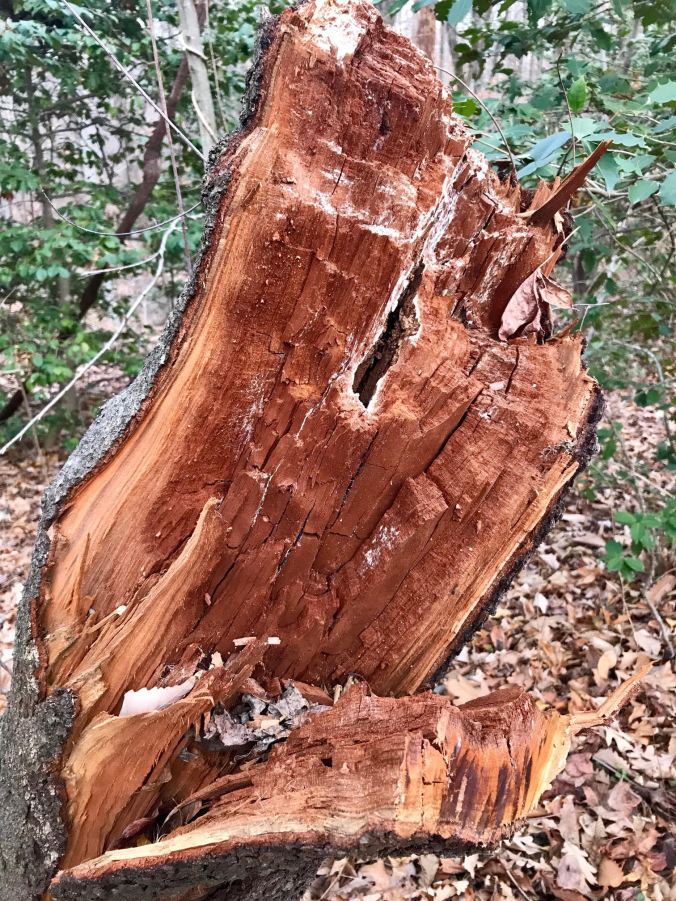
How gorgeous is this split cherry trunk?! What makes it so red?

Is this American Bittersweet (Celastrus scandens) offering its bright red fruit to the birds, or is it its invasive cousin Oriental Bittersweet (C. orbiculatus) getting a toehold in these woods? Is there enough water in these shriveled berries to help keep the animals hydrated while the stream is frozen?
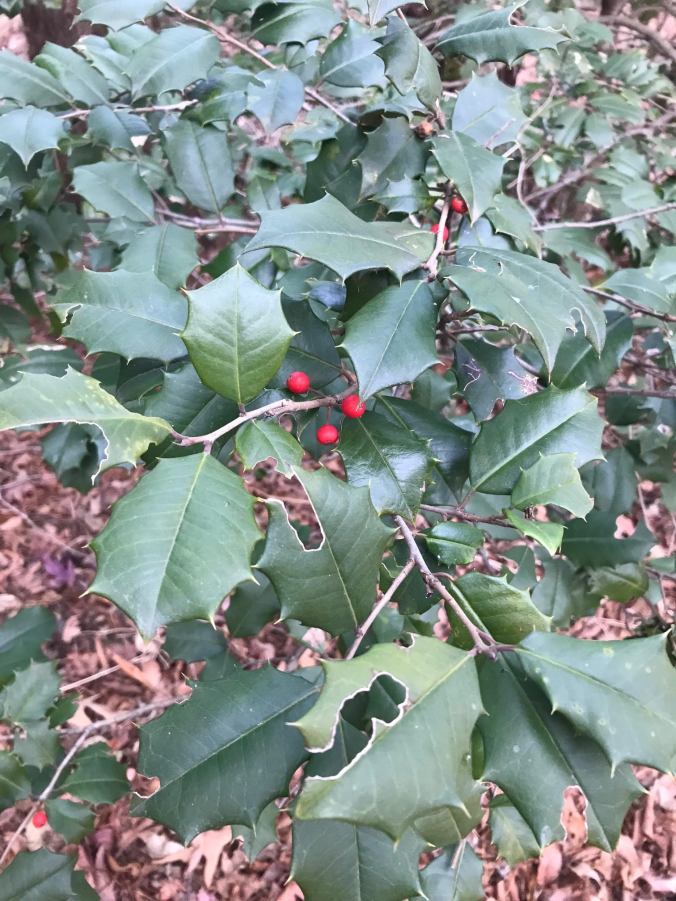
Why do the birds wait all winter to eat the holly berries? Do they taste so bad that they’re the kale of bird cuisine (only eaten as a last resort) or do repeated freezes somehow make them more palatable or nutritious come March?
Tomorrow I’ll snuggle in under the blanket of snow and research more answers. . .and more questions to ask on my next walk.
Is your comment about “muscles under the skin” suggesting that the look is indicative of beech trees, I hope I hope I hope? And when you say the beeches still had their leaves, are they like the oaks who hold onto theirs until March winds finally send them flying to the ground?
LikeLike
Yes, and yes! Beeches and oaks are cousins!
LikeLike